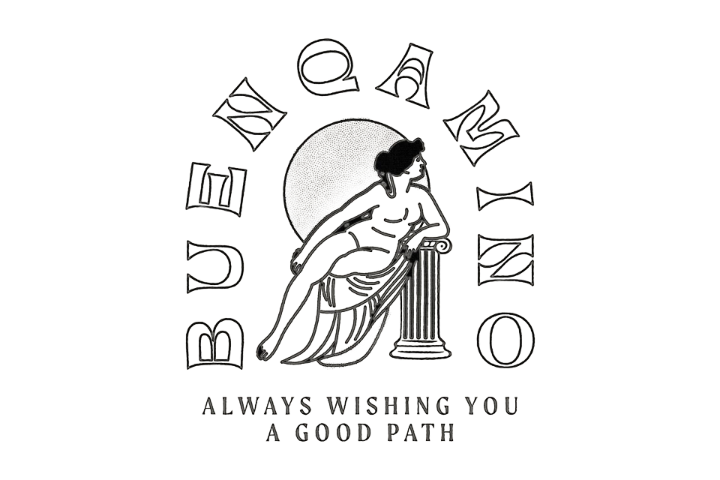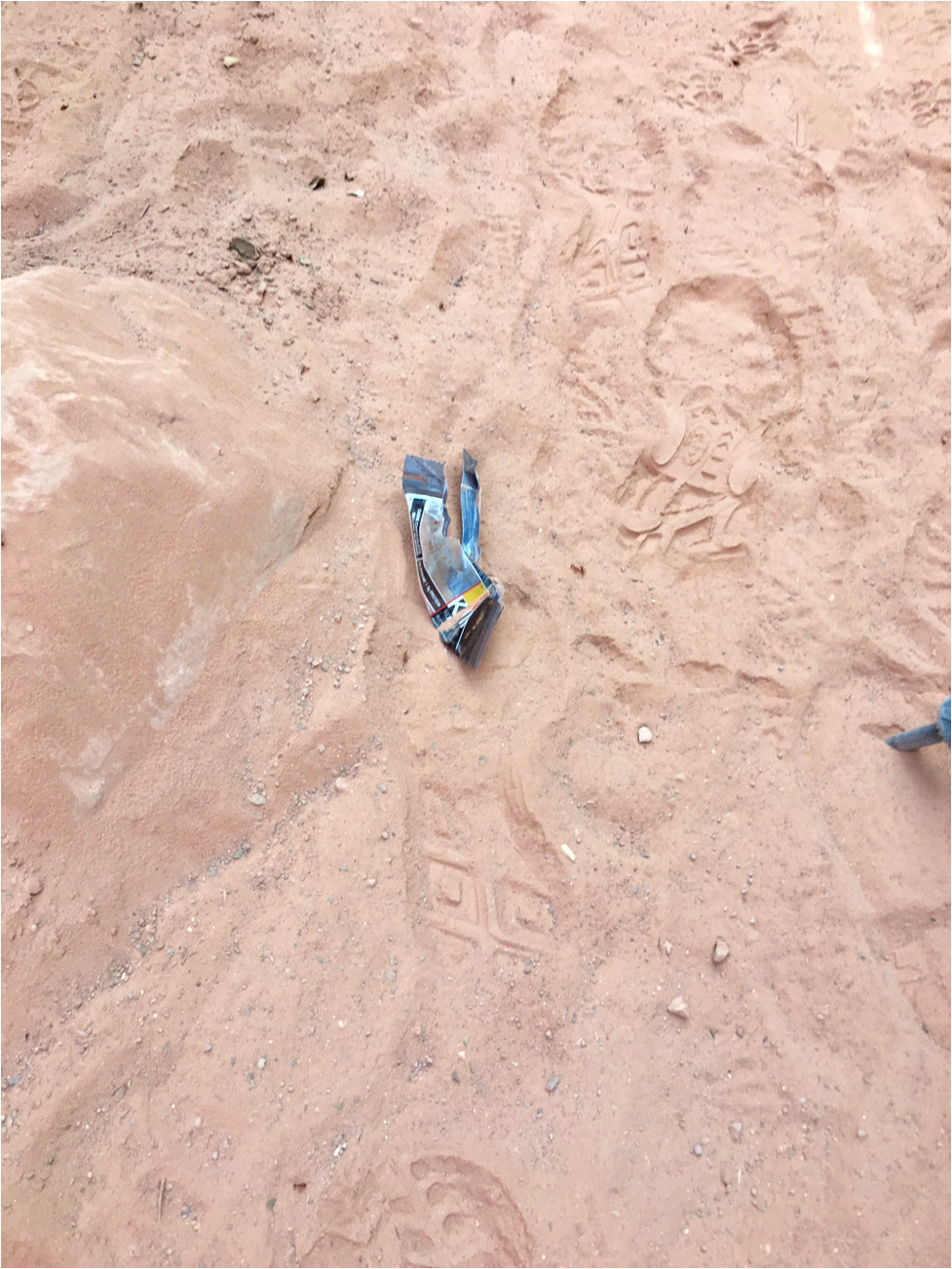Guide for Hiking to, and within Havasupai/ Supai Falls, Arizona (and Gluten-Free!)
I can’t stop dreaming of our trip to Havasupai, Arizona. It is miles of hiking through the deepest reds of the Grand Canyon’s walls, only to find an isolated Native American reservation, home to hidden cascades of bright turquoise blue waters running off ancient cliffs, hugged by the greenest of flora and fauna. It’s magical, to say the least. However, planning to check this off the ol’ bucket list isn’t easy. As you have heard in other blog posts, this paradise is both physically and logistically difficult to reach, but entirely worthwhile. The information below is based off my own experience and information I found prior to our trip, and while within the reservation.
Making a reservation: It only took me calling everyday for three months to get through (that incessant busy signal was not stoked on my profanities). Someone recommended that it was easier to get through by calling the lodge than calling the campground. I tried both, until finally reaching the lodge. My advice is to just be patient, and continue calling. Apparently, they are working on an online reservation system... Though until then, you can reach campground reservations at 928-448-2121, and the Havasupai Lodge at 928-448-2111. Note, you will probably memorize these phone numbers. Also, note that the lodge is actually not much more costly to stay in per night, especially if you have four people per room.
As of new, the maximum stay is three nights per reservation, or four days. Prices are subject to change without warning.
Lodge Cost in 2018
$145/night, for up to four people, with a $50 entrance fee per person. You will have to pay a deposit of $40, per room, per night. This is all taxable at 10%.
Camping Cost in 2018
1 night – $140.56
2 nights – $171.11
3 nights – $201.67
All weekend nights (Friday, Saturday, Sunday), holiday nights, and spring break dates will be charged an additional $18.33 per night. These include (Feb. 19, May 28, July 4, Sep. 3, Oct. 8, Mar. 5-8, Mar. 19-22).
Staying in the lodge also means you won’t have to hike in with a tent or sleeping bag on your back. Trust me, it’s divine to be in a real bed after a full day’s worth of hikes. What’s not divine? The lodge is in a corner of town, which is nearly 3 miles away and uphill from the campground/waterfalls. Pros and cons, BQrs.
Preparation: This is the list I used in preparation for the trip. Here are some items that are missing, in which I would highly recommend bringing:
Cash! – I must not have read this loud and clear in other blog posts, because it is quite necessary. For example, after completing the 8-mile hike down into the town on a Saturday morning, we wanted to sit for a nice breakfast in the cafe. But alas, their credit card machine wasn’t working, and their bank is closed on the weekends and holidays…My hangriness had reach its prime and I was not about to wait on a jet boiler to do its trick. Luckily for us, we had a little bit of cash to get us each a meal. And in case we didn’t, the grocery store’s credit card machine was working, at least for that day. Look, we would’ve survived either way. But the point is, don’t rely on technology to get you the calories you need while in the canyon.
Blister Remedies- All hail New Skin and 2nd Skin… This hike will wreak havoc on ‘em feet.
Clif Shot Bloks Energy Chews – If you’re not a fan of instant coffee, these have both caffeine, sodium, and electrolytes and were a hit amongst our group.
Decent Water Shoes (over sandals) – Don’t be fooled, there are some sharp rocks beneath those pretty turquoise waters. And for them slippery stones, make sure your shoes have some traction. I am obsessed with KEEN’s water sandles.
Gluten-free Dehydrated meals – A couple of my favorites include… GOOD-TO-GO Thai Curry and Mountain House Spicy Southwest Breakfast Hash. The hash is restaurant quality, which is a strange thought for free-dried food. Even my friends agreed. I ate it each day we were there, and will continue to pack it along on future backpacking trips.
Toilet Paper and/or Wipes – You will have to water the plants at some point during your hike into Supai. And if you’re a girl, you will probably need to wipe. If it weren’t for my friend bringing wipes, it would have been chafe city for me. Just make sure to also bring a zip-loc bag to stuff the toilet paper and/or wipes into. Do not leave your trash on the trail.
Climbing gloves - I couldn't have hiked down to Mooney Falls without them (see below).
Playing cards – Light to carry, and fun during down-time (I would not recommend gambling your cash though).
Inner Tube – I mean you don’t necessarily need this, but you need this. And when it’s time for you to leave, another hiker will be happy to take it off of your hands. At least that was our experience.
Items we brought, but didn't end up using:
Water purifier – The tap and spring water available was wonderful, but that’s not to say you shouldn’t bring one just in case. Speaking of the water, please make your voice clear and heard against the uranium mining that could be detrimental to the Supai and Grand Canyon Eco-system. With that said, I don't go anywhere without my water purifying straw, aka LifeStraw.
Mosquito Spray – A couple of us got bites at the trailhead, but not within the reservation. Not sure if this was due to the time of year (early September), so do your research, especially if you’re also prone to mosquito bites. I recommend Meow Meow Tweet’s Herbal Insect Repellent.
Getting to the Hilltop/Trailhead: Regardless of where you are traveling from, it will be a feat to even make it to the trailhead. We decided to stay the night in the closest city (Peach Springs, AZ) to the trailhead, ensuring we got a good night’s sleep before the hike. Hualapai Lodge is on Route 66 and on the Hualapai reservation, and cost just $120 plus tax with an AAA discount for four us to stay in a double queen size room. We requested to be on the opposite side of the train tracks, as I read quite a few complaints about how loud the train can be. None of us heard the train going by, nor used the free ear plugs the lodge provided... Did I mention they have a salt water pool, jacuzzi and free breakfast? Get itt.
Attached to the lodge, you have the best and only restaurant in town, Diamond Creek Restaurant. The restaurant is great, and even offers gluten-free options (bread, buns, waffles, etc!). Our waitress was knowledgeable regarding allergies, as well as patient and extremely kind. We were super impressed. They even have a hiker’s breakfast for 4.99 (if you’re leaving before their free breakfast at 8 AM), but that isn’t allergen friendly. Keep in mind, no alcohol is sold or served here, nor within Supai. Within town, you have the Hualapai Market and gas station (fill up on gas before you drive to the trailhead… we kind of forgot that one). Need something else to do while in town? The Grand Canyon Caverns (you can sleep in a CAVE HOTEL!) are nearby and are the largest dry caverns in the United States. They offer various tours throughout the day, and once again, you can sleep in a CAVE HOTEL! and there is restaurant attached to, and within the caverns. We arrived too late for the last tour… Tear. Next time!
Ok, now for the fun part… We woke up at around 3:45 AM, and left the lodge by 4:30 AM. It is a pretty easy straight-shot drive, and Indian 18 road is well paved and beautiful. If you’re leaving at this time, it will likely be pitch black, and there is plenty of wildlife to be seen. Who needs caffeine when a buck is trying to jaywalk in front of your car, or when a bird slams into your window? Yep. We got to the hilltop at about 6 AM and it was crowded. You may have to add a quarter-mile to your hike, depending on how far back you park. A serendipitous warm-up, as I called it. During our warm-up, we noticed more than a few people sleeping in their cars. This is an alternative to staying in a hotel. Can’t speak on the comfort level, however. There are pit toilets right at the trailhead if you need to downsize before the hike. Enjoy your descent!
Hiking in: Take in the beautiful, clean fresh air, and the amazing topography. There is no place quite like the inside of the Grand Canyon. Be respectful and keep to the side for horses and mules coming through, and please please PLEASE don’t litter. We were sad to see how many empty bottles and wrappers sadly decorated the trail. Also, bring and drink a ton of water! We each brought a minimum of 3 liters.
Supai: This is a very small and quiet village. Upon arrival, you will probably want two things: food and a restroom. And then the tourist office to register, of course. Enjoy service/wi-fi while you still have it. There won’t be any service once you head for the campground. Granted, the best connection can be found in nature (ha ;>)
Bathrooms – There are bathrooms in the cafe and some more attached to the basketball courts (if they are unlocked).
Supai Café – The cafe is open 7AM - 7PM, but this is subject to change and intermittant closures. Bear in mind, all of their food is transported via helicopter and they are limited in terms of their menu. This also means that they run out of items quite regularly. Considering the transportation cost, we were happy with the prices. I didn't have many options, because there are no separate areas to cook gluten-free food. Anyway, no complaints here! (Remember how long it took to get to Supai? Give them a break on negative reviews).
Market – Also open 7AM - 7PM, and offers what you would imagine a small town market offers. You will not find many gluten or dairy-free products, but you will find frozen gatorades and delicious chips (just make sure there are no holes in the bag... seriously. Hungry critters are rampant). It is really important to remember that these products are also transported via helicopter and not to raise expectations too high.
Bank – Open weekdays, and closed on weekends and holidays (as we learned the hard way).
Church – Service on Sundays, which is open to the public.
Post Office – Open on weekdays only.
Health Clinic – Open everyday, various hours.
Tourist office (6AM- 6PM during peak season) – If you are camping, this is where you will pick up your wristband, and a map. If you’re staying in the lodge, you will need to go straight to the lodge in order to receive a tag to tie to your backpacks as identification.






































































